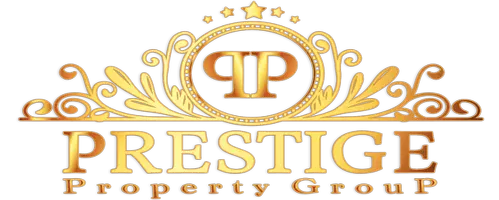Want a Down Payment Fast? Experts Say These Financial Assets Are Your Best Bet
Most people need financial help when it comes time to buy a home. The vast majority of homebuyers use a mortgage when buying, and that number is even higher among first-time homebuyers.
Ironically, however, many people need help in getting that help. Mortgage lenders require borrowers to bring their own money to the table in the form of a down payment. Where this money comes from varies from person to person, but the National Association of Realtors® recently found that, for the first time, homebuyers are more likely to use their own financial assets rather than help from family and friends to fund their down payment. First-time buyers are older now and have been saving longer—meaning those funds are finally available when it's time to close.
Not every financial asset is an equally good source of funding. Fees, taxes, and other costs can weigh down your decision to take money from these accounts and use them for a home, so make sure you understand which assets are the best down payment sources.
Where can your down payment come from?
Conventional home loans typically require a down payment that is typically 20% of the cost of the home. Depending on the home you’re looking to buy, this can be tens, if not hundreds, of thousands of dollars. Where does this money come from?
There isn’t a one-size-fits-all answer. According to NAR, most first-time buyers use their savings, followed by their financial assets and gifts or loans from friends and family. Inheritance as a source of down payment funds is also on the rise.
Be aware that mortgage lenders will scrutinize where your down payment money comes from. For example, they won’t be happy to hear that your $50,000 down payment comes mostly from a personal loan that you got from a friend—that’s more debt that you’ll have to pay off in addition to the loan you’re taking with them.
Therefore, lenders typically require you to document where every dollar of your down payment came from. This means providing bank statements showing the funds sitting in your account, and documenting and explaining recent large deposits. The stricter the loan program, the more carefully they’ll review your finances.
Why bank and brokerage accounts are the best sources
When it comes to using your financial assets to fund a down payment, not every asset is an equally useful option.
“Down payment choices cost homebuyers thousands in unnecessary taxes and penalties,” says Geoff Knight, the founder and CEO of File Tax Online.
Bank accounts, including checking and savings accounts and money market accounts, are typically the cleanest and most cost-effective option. They have no transaction costs, tax implications, or timing risks. The next best place to go is your brokerage accounts.
“A brokerage account is usually the smartest place to get down payment money. When you sell stocks or funds you own, you pay capital gains tax only on the profit. If you hold the investment for more than one year, most people pay 15% to 20% tax on the gain,” says Knight.
Brokerage accounts also don’t penalize you for withdrawing. If anything, you’ll be penalized only if your timing is bad and you sell when the market is down, locking in your losses.
Other common financial sources that are easier to use are Treasury bills and bonds and corporate bonds. These are liquid and have no penalties to use—they just tend to be lower-return investments that you may want to hold for safekeeping.
Why retirement accounts are the worst
Most experts agree that, with some exceptions, using your retirement funds for a down payment is a bad idea.
“If you have to tap into retirement savings, you should rethink whether you’re in a financial position to buy a house,” says Melanie Musson, insurance and financial expert at Clearsurance.com. “There are circumstances where using retirement savings as a down payment could be justified. But as a general rule, you need your retirement savings for your future financial security.”
Indeed, taking money from your retirement accounts is expensive. Withdrawing from a 401(k) early means a 10% penalty plus your income tax. IRAs are a slightly better bet, in that you can withdraw up to $10,000 without penalty, and Roth IRAs can be withdrawn from at any time, with only the earnings facing taxes and penalties.
But raiding these accounts costs more than meets the eye.
“Money left in retirement accounts grows over time. That same $50,000 left invested for 25 years could become $200,000 or more,” says Knight. “Taking it out now means losing all that future growth.”
Some employers do let you borrow from your 401(k) instead of withdrawing, paying it back with interest over time. But you run the risk of changing jobs and needing to repay the full loan within 60 to 90 days.
Running the numbers on retirement withdrawals
The temptation to raid retirement accounts often comes from trying to avoid other costs, such as private mortgage insurance, or PMI. If you’re in this position, run the numbers first—or better yet, meet with a financial expert—and see what makes sense.
Withdrawing $20,000 from a 401(k) could cost you around $2,000 in penalties and $5,000 to $7,000 in taxes—that's $7,000 to $9,000 gone immediately. PMI typically costs 0.5% to 1.5% of your loan amount each year, which you can eventually eliminate once you build enough equity. The retirement withdrawal, on the other hand, creates a permanent loss you can't recover.
That said, there are exceptions where tapping retirement funds makes sense. If you're buying in a hot market where home prices are jumping quickly, missing out on that appreciation could cost more than the withdrawal penalties, notes Knight. Or if you're already in your mid-50s and close to retirement, you have less time for that money to grow anyway, so the long-term cost is smaller. But in general, keep retirement accounts and 529 college savings plans as a last resort.
Avoid underplanning and overextending
As mentioned above, even the best financial assets can cost you something to use.
“The most expensive mistake is not planning for taxes,” says Knight. “Buyers withdraw large amounts without calculating what they will owe the IRS.”
To combat this, calculate your tax bill before you sell. Set aside the estimated tax money immediately rather than spending your full withdrawal, and consider timing your sale strategically or spreading it across two tax years to minimize your bracket.
Another issue people run into is raiding their retirement accounts, convinced that this is a short-term gap that they can fix later.
“They often think they’ll repay their retirement account and catch up, but then they don’t. Instead, the house consumes their income, leaving them with nothing to rebuild their retirement accounts at the end of each month,” says Musson.
In all cases, make sure not to use every dollar you’ve earned and saved on your down payment. The costs of homeowning don’t end at purchase: You’ll need money for emergencies, repairs, and anything else that comes up.
The right down payment source depends on your specific financial situation, but the principle remains the same: Choose the option that costs you the least in both immediate fees and long-term growth potential. When in doubt, work with a financial adviser to run the numbers before making any major moves.
Categories
Recent Posts










GET MORE INFORMATION

